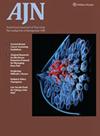原创研究:警报疲劳:探索护士的适应性和不适应性应对策略。
IF 2
4区 医学
Q1 NURSING
引用次数: 0
摘要
背景为了提高病人的安全性,医院使用警报通知系统来提高护士对病人状况的实时了解。这些警报对护士的临床决策和优先次序的确定至关重要,从而有助于改善病人护理和提高护理效率。但是,频繁且经常同时响起的警报声,包括许多错误、非紧急或不可操作的警报声,导致了护士对警报的不知所措、不信任和脱敏,从而产生了警报疲劳。本研究旨在探讨肿瘤科护士对警报的生活体验,以及她们应对警报疲劳的适应性和不适应性策略。研究人员从美国中西部一家大型磁性医院的两个肿瘤科抽取了九名护士作为样本。定性数据的收集采用了一个包含六个问题的半结构化访谈指南。访谈在病房的私人会议室面对面进行,或通过在线视频会议平台 Zoom 进行。结果数据分析得出了五个主题,其中最突出的是警报的数量和频率较高。护士参与者表示,他们采取了更多的适应性应对策略,而非适应性应对策略。总体而言,他们认为错误、非紧急和不可操作的警报频率过高,扰乱了他们的工作流程,并导致了对警报的普遍不敏感。当务之急是采取切实可行的措施,减轻护士的认知负荷;将非护理职责转移给其他员工;实施注重效率的流程变革,如重新设计工作流程以尽量减少干扰。应尽一切努力重新设计规程以减少警报疲劳,包括减少错误、非紧急和无法采取行动的呼叫和警报数量。本文章由计算机程序翻译,如有差异,请以英文原文为准。
Original Research: Alarm Fatigue: Exploring the Adaptive and Maladaptive Coping Strategies of Nurses.
BACKGROUND
To improve patient safety, hospitals use alarm notification systems to increase nurses' real-time situational awareness of a patient's condition. Such alarms are critical to nurses' clinical decision-making and prioritization, thus helping to improve patient care and care efficiency. But the frequent and often simultaneous ringing of alarms, including many that are false, nonemergent, or nonactionable, has led to overwhelm, alarm distrust, and desensitization, resulting in alarm fatigue.
PURPOSE
This study aimed to explore oncology nurses' lived experiences with alarms and the adaptive and maladaptive strategies they use to cope with alarm fatigue.
METHODS
This qualitative, phenomenological study was guided by the theoretical framework of the Roy Adaptation Model. A purposive sample of nine nurses was recruited from two oncology units at a large midwestern Magnet hospital in the United States. Qualitative data were collected using a six-question, semistructured interview guide. Interviews were conducted either face-to-face in a private conference room on the unit or via the online videoconferencing platform Zoom.
RESULTS
Data analysis yielded five themes, the most prominent being the high volume and frequency of alarms. Nurse participants reported adopting more maladaptive than adaptive coping strategies. Overall, they felt that the high frequency of false, nonemergent, and nonactionable alarms disrupted their workflow and contributed to a general desensitization to alarms.
CONCLUSIONS
This study's findings offer valuable insight into the problem of alarm fatigue among nurses. Practical measures are urgently needed to reduce nurses' cognitive overload; shift nonnursing responsibilities to other staff; and implement efficiency-focused process changes, such as reengineering workflows to minimize interruptions. Every effort should be made to redesign protocols to reduce alarm fatigue, including by decreasing the number of false, nonemergent, and nonactionable calls and alarms.
求助全文
通过发布文献求助,成功后即可免费获取论文全文。
去求助
来源期刊
CiteScore
1.10
自引率
3.70%
发文量
604
审稿时长
6-12 weeks
期刊介绍:
The American Journal of Nursing is the oldest and most honored broad-based nursing journal in the world. Peer reviewed and evidence-based, it is considered the profession’s premier journal. AJN adheres to journalistic standards that require transparency of real and potential conflicts of interests that authors,editors and reviewers may have. It follows publishing standards set by the International Committee of Medical Journal Editors (ICMJE; www.icmje.org), the World Association of Medical Editors (WAME; www.wame.org), and the Committee on Publication Ethics (COPE; http://publicationethics.org/).
AJN welcomes submissions of evidence-based clinical application papers and descriptions of best clinical practices, original research and QI reports, case studies, narratives, commentaries, and other manuscripts on a variety of clinical and professional topics. The journal also welcomes submissions for its various departments and columns, including artwork and poetry that is relevant to nursing or health care. Guidelines on writing for specific departments—Art of Nursing, Viewpoint, Policy and Politics, and Reflections—are available at http://AJN.edmgr.com.
AJN''s mission is to promote excellence in nursing and health care through the dissemination of evidence-based, peer-reviewed clinical information and original research, discussion of relevant and controversial professional issues, adherence to the standards of journalistic integrity and excellence, and promotion of nursing perspectives to the health care community and the public.

 求助内容:
求助内容: 应助结果提醒方式:
应助结果提醒方式:


